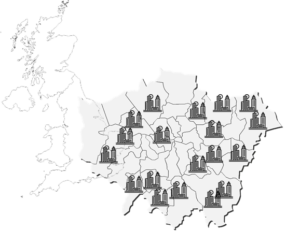
HOW MUCH SERVICE CHARGE SHOULD YOU BE PAYING?
Check your flat service charge.
Enter your details below to compare your service charge
with nearby buildings
Compare your service charge and see how much you could save
1
Search
using your postcode
2
Compare
using your building details
3
Review
how much you could save
4
Request
estimated service charges for next year
How this works

We combine information from dozens of buildings in your area

Complete a quick search with some basic details of your building

Generate a instant service charge analysis & Request a detailed review
Is your service charge too high?
Probably ! Due to flat owners not actively managing their buildings and the time needed to go through all of the receipts and budgets, costs often spiral out of control.
The first step to check this involves understanding how your current service charge compares to similar properties. To get more information about this, please use our review form below.

More information on what service charge is and what it is used for
These are the fees that you have to pay every year to cover the running of the communal services in your block of flats. Most buildings – even small blocks, with only 1-2 flats would normally require some service charges to be paid.

The communal and shared services can involve the day-to-day maintenance needs, for example: heating, lighting, panting, plumbing etc.. Otherwise these may cover larger, one-off projects, for example, fixing the roof or servicing the lifts.
Typically these charges will be collected on a quarterly basis and each flat owner will usually be charged a variable amount based on the size of their flat. Therefore, if you own the biggest flat in a building you can normally expect to pay the most.
The service charges will usually be collected by the building's management agents, on behalf of the flat owners. These should then be saved securely in a client-account run by the managing agents.
The typical costs – what are the major expenses?
Different buildings will have different costs. For example, with older buildings, one-off repairs can represent a large percentage of the total costs, whilst newer buildings are lower maintenance. This can be seen in a similar way, to the differing costs between running a new and older house.
Some example of these costs can be seen below
One off refurbishments and works
For example: fixing the roof, changing the boilers, servicing the lift

Cleaning and general maintenance
For example: regular cleaning of the communal spaces, maintaining a garden

Financial management and regulation
For example: filing the building’s accounts, arranging building insurance and fire inspections

Management fees:
For example: the administration charges to run the building and arrange any works needed

How much can you reduce your costs by?
Often the levels of costs reflect the needs of the building or the level of service that the flat owners require. For example, older buildings will tend to cost more to run and blocks with higher levels of communal services (for example, lifts, a full time porter or a maintained garden), will naturally require more money.
- However, we find that there is often a large scope to save money when either:
The managing agents are not appointed by the flat owners – e.g., in new-build blocks of flats, or leasehold flats without a right-to-manage agreement - Where the flat owners board is inactive – e.g., the managing agents are appointed by the flat owners but are not scrutinised

Managing agents not appointed by flat owners
This may be the case where each flat is owned on a leasehold basis and the managing agents were appointed by the block freeholder.
Often the freeholder will agree high fees for services as they will not be paying for them – effectively making the flat owners pay more for a lower level of service.

Where the flat owners are inactive
If there is not a board that regularly reviews the building costs, managing agents will take service charge decisions themselves. This will often lead to work which is expensive, low quality of unnecessary.
Where is service charge wasted?
The common areas that service charge is wasted can be seen on the below table.
| Expenditure Type | Average Reduction |
|---|---|
| Insurance | 50% |
| Maintenance services | 25% |
| Management fees | 50% |
| Refurbishment costs | 30% |
This table shows the typical saving that can be made after new managing agents are appointed. These figures will change based on your buildings needs, how your current managing agents work and the level of service you need.

